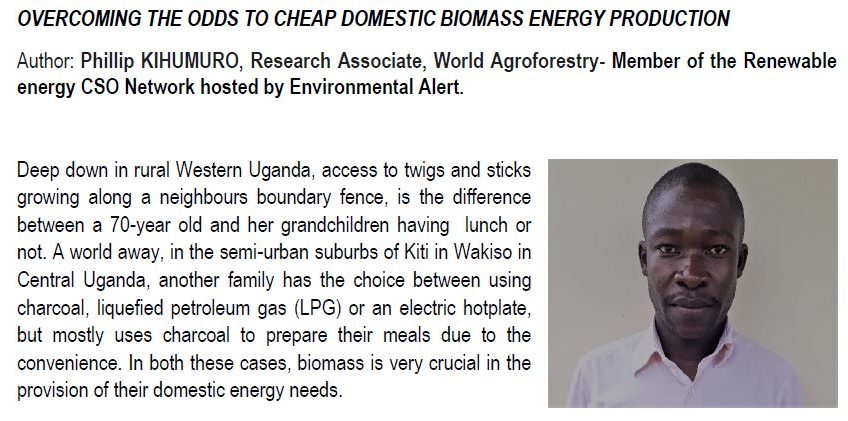Author: Phillip KIHUMURO, Research Associate, World Agroforestry- Member of the Renewable energy CSO Network hosted by Environmental Alert.
Deep down in rural Western Uganda, access to twigs and sticks growing along a neighbours boundary fence, is the difference between a 70-year old and her grandchildren having lunch or not. A world away, in the semi-urban suburbs of Kiti in Wakiso in Central Uganda, another family has the choice between using charcoal, liquefied petroleum gas (LPG) or an electric hotplate, but mostly uses charcoal to prepare their meals due to the convenience. In both these cases, biomass is very crucial in the provision of their domestic energy needs.
Close to 90% of Uganda’s total primary energy consumption is generated through biomass (77% firewood, 5.6% charcoal and 4.7% from crop residues (MEMD, 2016). The REDD+ strategy for Uganda has identified fuelwood consumption as one of the drivers of deforestation and degradation in Uganda The question is: how can charcoal be produced sustainably to meet this demand without destroying and degrading forests and the environment?

